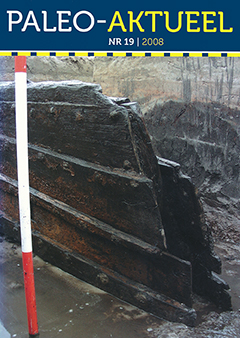Onderzoek naar een urnenveld op de Rossumer es (Twente, Ov.)
Samenvatting
An urnfield on the Rossumer Es (province of Twente and Overijssel). In the summer of 2007, part of a cemetery dating from the Late Bronze Age and the Early Iron Age was excavated at the village of Rossum in the northeastern part of Twente. The cemetery is located on the edge of a low ridge, near a brook. Numerous graves were found, some surrounded by ditches, in which the burials (cremations) were placed in pits, either in urns or unurned. Within some of the circular, square or rectangular ditches no burials were found. In those cases the cremated remains may have been placed on the ground and only been covered by the low mounds that must have been present originally, or in shallow pits that have been ploughed out since. In some graves no burials were found, as they might not have been placed in the ground and have been lost in earlier times. Physical-anthropological research revealed that the burials contained both adults and children, of all ages. There is evidence of social stratification. Besides features belonging to the cemetery, traces of three granaries and part of a house plan were also uncovered, which are probably younger than the cemetery. Although the burial rite in the cemetery of Rossum has very close links to contemporary burial practices in cemeteries on the sandy soils of the northern Netherlands and northwestern Germany, there may have been south(west)ern influences as well, considering the finds of a decorated button made of animal bone and an urn that resembles both bronze hanging bowls and small types of pottery found in graves in the Urnfield Culture of southwestern Germany.

